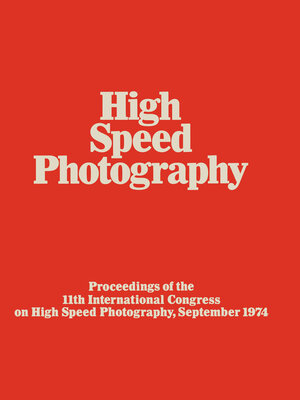High Speed Photography
ebook ∣ Proceedings of the Eleventh International Congress on High Speed Photography, Imperial College, University of London, September 1974 · Humanities, Social Sciences and Law
By P.J. Rolls

Sign up to save your library
With an OverDrive account, you can save your favorite libraries for at-a-glance information about availability. Find out more about OverDrive accounts.
Find this title in Libby, the library reading app by OverDrive.



Search for a digital library with this title
Title found at these libraries:
| Library Name | Distance |
|---|---|
| Loading... |
The combination of color schlieren with high speed flash techniques has proved to be a valuable tool for investigating high speed transient events. Fully two dimensional refractive index information can be ob tained. The resolution on 35 mm film was sharp enough to allow 50 cm by 75 cm color enlargements. REFERENCES 1. Barnes, N.F., Jour. of the SMPTE, Oct. 1953, Vol. 61,487-511. 2. Cords, P.R., S.P.I.E. Jour., February-March 1968, Vol. 6. 3. North, R.J., NPL/Aero/266, 1954. 4. Settles, G.S., Image Technology, June-July 1972. 5. Smith, L.L., and J.R. Waddell, 9th Congress of Righ Speed Photogra phy, Denver, Colo., August 1970, Paper 86. 6. Stong, C.L., and G.S. Settles, Scientific American, May 1971, Vol. 225, No.5. 7. Stong, C.L., and Vandiver, J.K., Scientific American, August 1974, Vol. 231, No.2. ,105 DISCUSSION MY' R J North, (UK): Pould the author care to comment on possible ambiguities of interpretation due to the omnidirectional sensitivity of the colour filter system used? I notice that in two of his pic tures density gradients in directions at right angles are shown by the same colour transitions. MY' J Kim Vandiver: The photographs presented were not composed to yield accurate determination of the direction of density gradients.







